In early April, 1982, Argentina invaded the Falkland Islands, a few desolate rocks in the South Atlantic. The first British units to respond were their nuclear submarines, with HMS Spartan and HMS Splendid sailing south before the outbreak of war. HMS Conqueror soon followed, and despite various obstacles, both technical and political, the first two boats arrived in mid-April, and immediately began to assert British control over the seas around the islands.
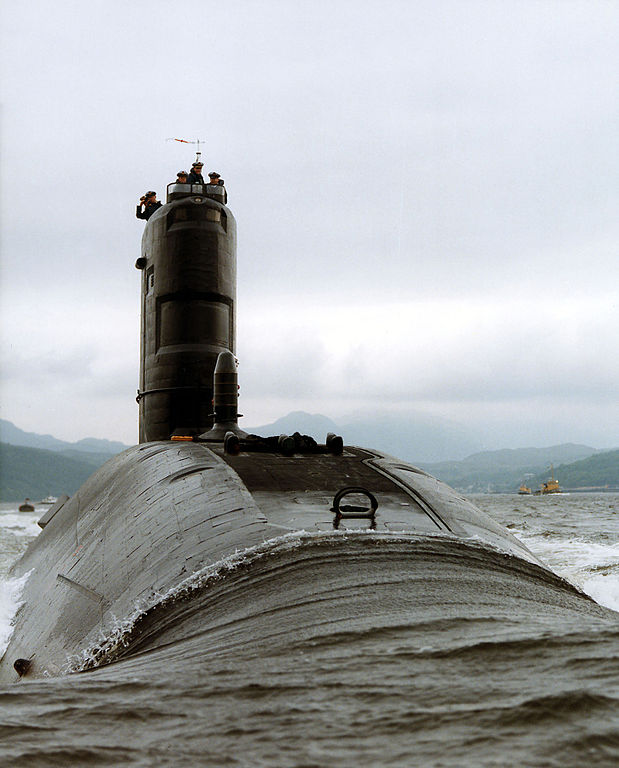
HMS Spartan
Spartan's first destination off the Falklands was Stanley, where she conducted a periscope reconnaissance of the town, the first outside information since the invasion. One vital piece of intelligence was quickly gained when she saw two vessels laying mines, which the Task Force had previously believed the Argentine forces didn't have the capability to do. Unfortunately, the ROE prevented Spartan from sinking the ships and disrupting the minelayers, and she remained near Stanley until April 21st.
Splendid arrived on the 15th, and both submarines settled into their patrol routine. Their arrival had greatly reduced surface traffic in and out of the Falklands, although the invaders chanced a few last runs, gambling that the British wouldn't sink unarmed merchant ships without warning. But the biggest concern was the Argentine submarines, and both British boats drilled regularly on how to respond if they were encountered. This wasn't an idle threat, either. Only two of Argentina's four submarines, the German-built Type 209 San Luis and the WWII-era Santa Fe, were even operational,1 but San Luis had put to sea on the 17th, with orders to remain on the edge of the exclusion zone and not fire the first shot while negotiations were underway.
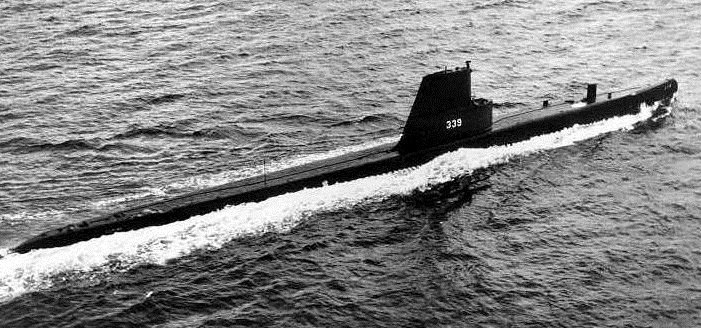
ARA Santa Fe
That same day, Santa Fe had sailed for South Georgia bearing reinforcements, unaware that the British were closing in on the island. Conqueror was actually the first vessel to reach the area, arriving on the 18th, although after a brief reconnaissance, she withdrew from the inshore area to guard against intervention by the Argentine Navy. On the 21st, her sonar picked up the signature of a submarine running on diesels, but lost the contact before she could localize it well enough to shoot. On the 24th, radio intercepts made it clear that Santa Fe was in the area, and Conqueror was ordered to aid in the search, but the Argentine submarine slipped by and unloaded her passengers in the early hours of the 25th, before being located by a helicopter from the frigate Antrim, and ultimately driven aground by the British. Conqueror was released to join Splendid and Spartan near the Falklands, although her communications mast had been damaged in rough seas. On the way, she had to surface and send men topside in the rough seas of the South Atlantic to dismount the antenna, repair it, realign the mast, and reinstall the antenna. This improved things, although communications were still intermittent for the rest of the war.
Things there had been reasonably busy. Splendid had had a scare early on when she picked up the sonar off of a Guppy, leading the crew to spend 15 frantic minutes trying to pick up the other submarine before someone noticed that the noise was actually coming from some of her onboard machinery instead. On the 21st, British intelligence found the location of the Argentinian task force built around the carrier Veinticinco de Mayo, and Splendid had been dispatched to shadow and maybe even sink the carrier before diplomatic considerations prompted her to be recalled to the exclusion zone when just hours away from the target area. Both submarines spent the next few days on patrol in case the Argentinian Navy came out to play, and Splendid made a second attempt on the carrier on the 26th, getting periscope sights on her escort group, including the two Type 42s. Veinticinco de Mayo, however, was nowhere to be found, and headquarters at Northwood ordered the SSN to turn south despite her captain's protests. On May 1st she found only empty sea, which was particularly disappointing as the ROE had finally been changed to allow the carrier to be attacked anywhere outside Argentine Territorial Waters. By this point, the Task Force had begun its assault on the islands, and the threat of Argentine counterattack was very real, but neither of the submarines could find their target.
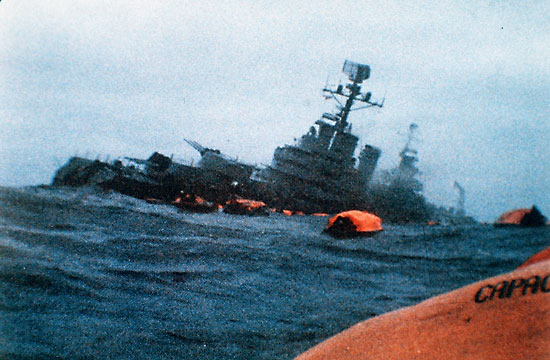
Belgrano sinking
Conqueror, operating to the south, had better luck. On May 1st, she located the group led by the General Belgrano, originally picking up the nosy engines of the oiler that provided them with fuel. However, Belgrano stayed stubbornly outside the exclusion zone, raising the possibility that the Task Force would fall victim to a pincer attack from north and south. Woodward passed the order for Conqueror to sink the cruiser, something he had no authority to do, but which did successfully force the government's hand. The Cabinet agreed to let Conqueror do her work, ultimately sinking the Argentine cruiser in one of the most controversial incidents of the war.
But all the controversy was still to come, and in the meantime, Splendid had picked up a contact inside the 12-mile limit that they thought was the carrier. While they weren't allowed to engage, they trailed the contact throughout the night, hoping that the Argentinians would move more than 12 miles from the coast. Things went awry the next morning when they put up the periscope to discover that everything was shrouded in dense fog. British ROE required visual identification of targets2 and they soon lost contact as the Argentinian surface force soon decided to stay well inshore, where the rules prohibited the submarines from following. Thatcher herself wished to change this, even if it meant sending one of the SSNs into shallow water, but her advisors talked her out of it for fear of making the diplomatic situation worse.
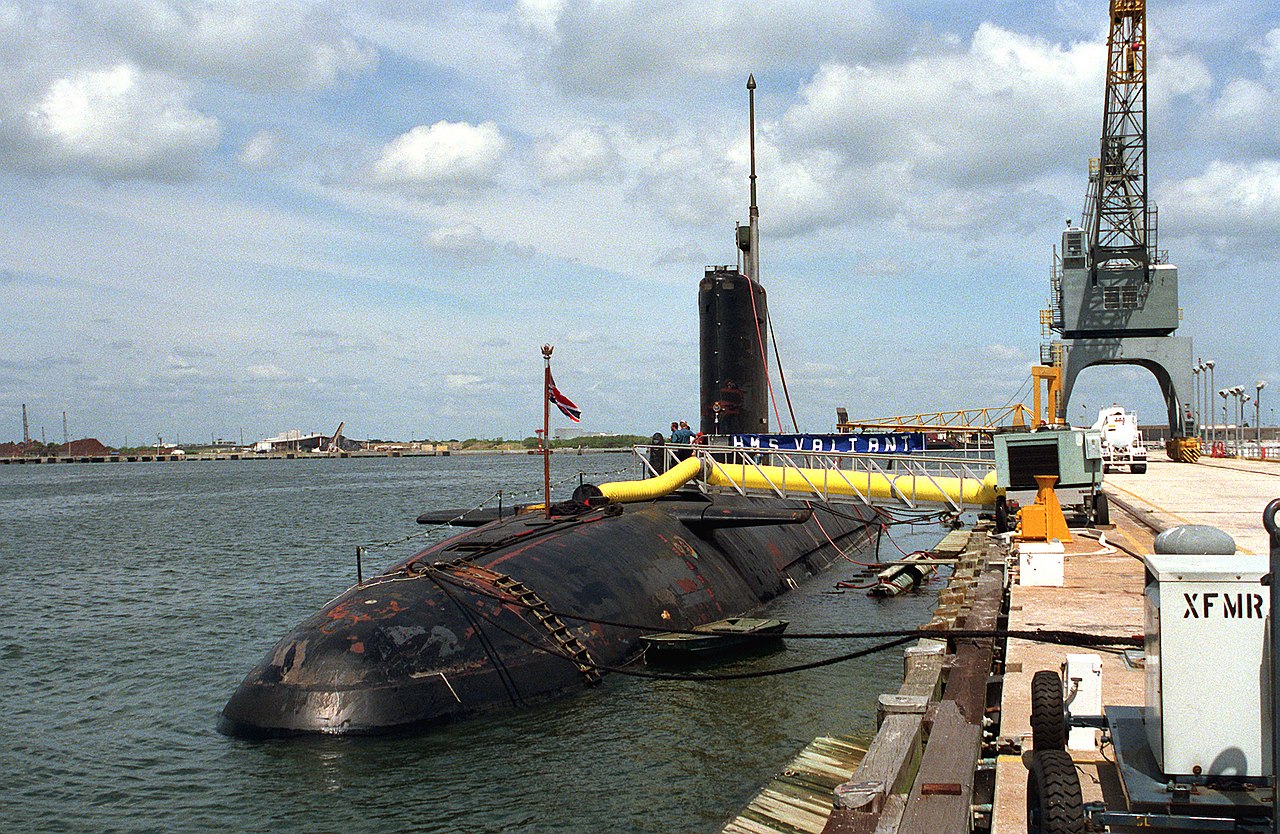
HMS Valiant
While the diplomats were bickering, Splendid was forced to deal with mounting technical problems, most notably a balky generator. Fixing it would mean shutting down the reactor and running on the diesel while either surfaced or snorkeling, and the submarine withdrew to the east to carry out repairs. The repair work took 8 days, and when it came time to restart the reactor, they found the worst seas they had seen during their time in the South Atlantic. They began the process of scramming the reactor and bringing it back online, but then the weather forced them deep, and they had to finish the restart on battery power, completing it with only 30 second of juice left. Nor was Splendid the only submarine with engineering problems. Valiant, 21 years old and suffering from steam leaks, hydraulic leaks, and even the occasional fire, arrived the day after Splendid finished her repairs, and was immediately dispatched to intercept San Luis, believed by British intelligence to be leaving the Falklands towards home. While it was calm and sonar conditions were good, a diesel trawler in the area and no fewer than 180 biological contacts3 kept the sonar picture confused enough that the Argentine submarine was able to slip through.
This escape was probably the biggest success San Luis had had during her entire patrol. She had reached her patrol area northeast of the Falklands on April 29th, although the British quickly learned of her presence through signal intelligence. On May 1st, as the British launched their initial attack on the Falklands, frigates Brilliant and Yarmouth were dispatched to hunt her, in conjunction with three Sea Kings from Hermes. They made several attacks on suspected contacts, but none of them came near San Luis, who detected the two frigates at long range, firing a torpedo at something between 10,000 and 14,000 m. The attack was unsuccessful, as the submarine's fire-control computer was broken, and the torpedo had to be guided by hand, a procedure that was unlikely to produce a hit even if the guidance wire hadn't broken.
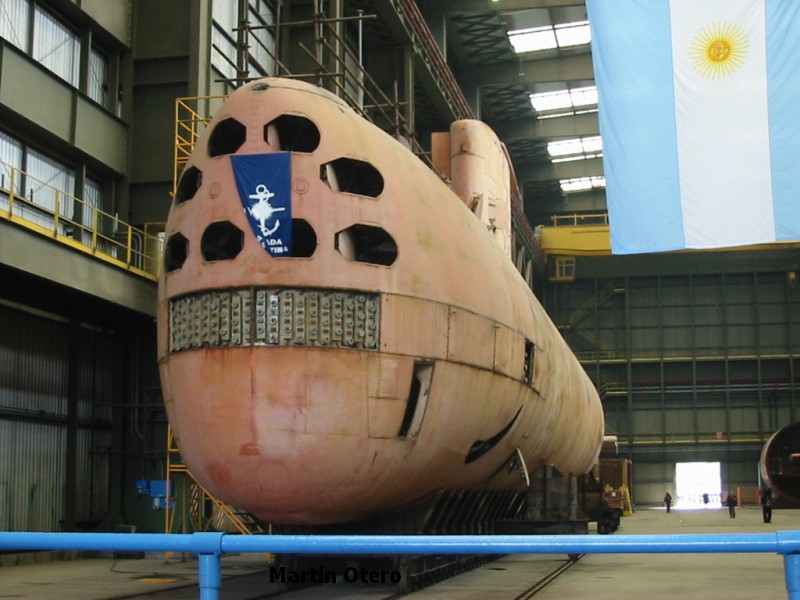
ARA San Luis in 2004
The next week was quiet, as the British stayed well clear of the Falklands. On May 8th, San Luis picked up an underwater sonar contact that her crew thought was a submarine, and engaged with a torpedo. Her crew reported an explosion, although there were no British submarines in the area, and her Captain later said that he believed it was a whale. Two days later, San Luis was off the northern entrance to Falkland Sound as frigate Alacrity passed through it in preparation for the coming invasion. HMS Arrow was waiting to meet her, and excellent sonar conditions allowed the submarine to track them easily, particularly as they headed directly towards her after rendezvousing. San Luis tried to engage Alacrity with a pair of torpedoes, but the first failed to leave the tube, and the second, fired under manual control, didn't hit. Exactly what happened is still not clear. The guidance wire broke at about the time a hit would have been expected, although neither British ship was damaged or even noticed that they were under attack. Alacrity's torpedo decoy was found to be badly damaged when it was recovered later on. Initially, this was ascribed to grounding, but it is possible that the torpedo actually hit the decoy and failed to go off due to poor maintenance. In any case, a second shot wasn't possible, and San Luis was ordered home the next day. The war would be over before she was ready for another sortie.
But while San Luis' departure from the exclusion zone marked the triumph of the British at sea control, largely enforced by their SSN fleet, it didn't mean that their boats would be idle for the last weeks of the war. We'll take a look at their operations in that period next time.
1 The Argentinian Navy had one more submarine of each type, but Type 209 Salta had shaft problems that made her too noisy while Santiago del Estero was in such bad shape that she couldn't even submerge, and they had to resort to the subterfuge of moving her from her home base to try to convince the British that she was at sea. ⇑
2 While ships can be identified from their sonar signatures, I suspect the British didn't have signatures for most Argentinian ships, as opposed to the Soviets. ⇑
3 Whales, fish, and other marine life. ⇑

Comments
I am still baffled by the idea that sinking the General Belgrano was controversial. Calling off the attack on the Argentine carrier seems far more controversial to me, at least once that fact was made public.
And in a nation made up of the sort of people who read Naval Gazing, that would undoubtedly be the case. But a large portion of the British public doesn't read Naval Gazing, and has strange ideas about how war should work. I suspect that some of it is also tied in to the broader anti-Thatcher narrative, which is still reasonably important in Britain, AIUI, or at least was as of a few years ago.
But a large portion of the British public doesn’t read Naval Gazing
Yet. (Growth mindset)
I'm doing my part!
And yes, I suspect a lot of it is general antipathy towards Thatcher and almost everything she did. (not taking a stance on whether that's justified or not)
A large part of the political decisions as to what could and couldn't be attacked was about keeping the UN on side and avoiding any vote there limiting the British options. Britain was painted as the aggressor by Argentina and a number of countries including some NATO countries were against the UK exercising its right to self defense by pushing the invaders off the Islands.
I'm not sure it was the UN specifically. Any vote with actual teeth would have to go through the Security Council, and Britain probably had two vetoes there. All the General Assembly could do was make noise. But yeah, target selection was politically driven by not wanting to make Britain the bad guy in the eyes of the world.